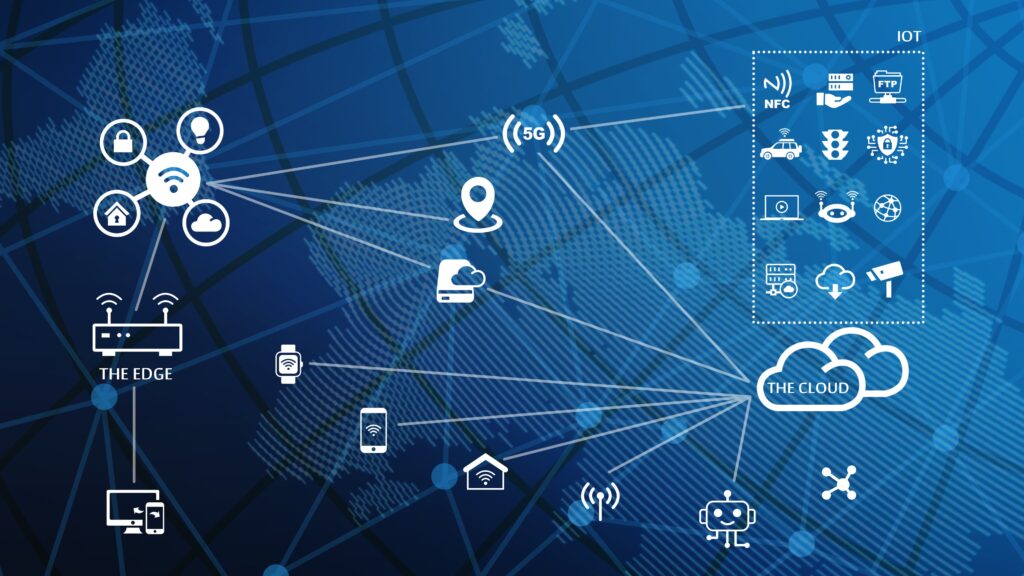Digital twins are a transformative technology that is changing the way industries handle maintenance in the context of Industry 4.0. Using real-time data and other sources, a digital twin is a virtual representation of a physical asset, process, or system that spans its lifespan and facilitates learning, reasoning, and dynamic recalibration for better decision-making. Although this idea is based on systems engineering concepts, big data analytics, artificial intelligence (AI), and the Internet of Things (IoT) have all contributed to its rapid progress.
What Are Digital Twins?
Digital twins blend historical data, machine learning algorithms, simulations, and real-time data from sensors implanted in physical assets to develop a fully digital model. By keeping an eye on the asset’s performance, anticipating problems, and optimising maintenance plans, this approach may boost productivity, cut expenses, and increase overall operational reliability. Take a look below to understand the key components of a digital twin:
- Physical asset: The actual machine or system that is being replicated digitally.
- Data collection: IoT devices and sensors collect information about the environment and functioning of the asset.
- Digital model: A virtual representation of the object created with simulations, data, and algorithms.
- Analysis tools: Machine learning and AI algorithms process data to provide insights.
- Visualisation and interaction: User interfaces that let users communicate with the digital twin and see forecasts and data.
The Role of Digital Twins in Maintenance
As industries strive to enhance efficiency and reduce operational costs, maintenance has become a focal point for innovation. Traditional maintenance strategies, like scheduled and reactive maintenance, can result in unanticipated downtime and significant expenses. With the ability to provide proactive, condition-based, and predictive maintenance procedures, digital twins present a revolutionary approach to maintenance. According to a report by Markets and Markets, the global digital twin market will be worth $110.1 billion by 2028 – a huge $100 billion increase from its $10.1 billion valuation in 2023. This constitutes a compound annual growth rate (CAGR) of 61.3%. This rapid growth underscores the significant impact digital twins are having on industrial maintenance practices.
Predictive Maintenance
Predictive maintenance is taken to a new level thanks to the introduction of digital twins. Digital twins are able to forecast when a component is going to break by continually monitoring its state using real-time data. Through the use of this strategy, maintenance may be carried out exactly when it is needed, saving money and minimising downtime that comes with reactive (which is carried out after a failure) and planned (which may happen too early or too late). Siemens uses digital twins in its Amberg Electronics Plant to simulate and monitor production lines to increase productivity, reduce downtime and cut costs.
Condition-Based Maintenance
Digital twins provide information on an asset’s health in real-time, which makes condition-based maintenance easier. Rather than depending on preset timetables, maintenance tasks are initiated in response to the asset’s actual condition. This method is especially helpful in sectors like transportation and heavy machinery, where operating circumstances are very variable, or healthcare. For instance, Philips uses digital twins to track the state of medical imaging equipment, such as CT and MRI scanners. By ensuring that devices are maintained and repaired in accordance with their actual usage and condition, this condition-based maintenance strategy helps to minimise downtime and guarantee high availability of vital medical equipment.
Asset Lifecycle Management
When it comes to controlling an asset’s whole lifecycle—from design and production to operation and decommissioning—digital twins are indispensable. Digital twins can be used to optimise an asset before it is created by simulating its performance under several scenarios during the design phase. Digital twins assist with performance monitoring, problem diagnosis, and maintenance scheduling while in use. When an asset’s lifespan is coming to an end, digital twins can help with decision-making about refurbishment, reuse, or disposal.
Rolls-Royce uses digital twins to manage the lifecycle of their jet engines. Digital twins can improve design procedures, forecast engine performance in the future, and optimise maintenance schedules by continually gathering and evaluating performance data. Longer asset lifespans and increased dependability result from this. Find out how the company uses digital twins in the video below:
Training and Simulation
When it comes to educating maintenance staff, digital twins are an invaluable resource. By interacting with a digital twin, technicians may practise maintenance procedures in a virtual environment, learn about the behaviour of the asset, and simulate different failure situations. This reduces the learning curve, improves the readiness of maintenance teams and also avoids costly downtime for training.
Businesses in the automotive sector, such as Ford, enable specialists to practise maintenance processes without interfering with actual production by using digital twins of complicated technology, such as robotic arms used in manufacturing lines. This practical training method improves skill development and guarantees that maintenance tasks are carried out appropriately.
Better Collaboration
Digital twins facilitate better cooperation across many stakeholders and teams. The same digital twin is accessible to engineers, operators, and maintenance teams, guaranteeing that everyone is working with the most recent data. This common knowledge facilitates better coordination of maintenance tasks, troubleshooting, and solution implementation. For example, in the oil and gas sector, Shell employs digital twins of offshore platforms to enable engineers onshore to communicate in real-time with platform operators, improving the accuracy of diagnostics and efficiency of maintenance operations.
Data-Driven Insights for Continuous Improvement
By analysing the data collected from digital twins, organisations can gain insights into how assets perform under different conditions and identify opportunities for improvement. These discoveries may be applied to improve asset performance, enhance maintenance plans, and promote ongoing development. Digital twins of turbines, for instance, are used in the power generation industry to gather data on emissions, fuel economy, and performance. By analysing this data, turbine operation may be optimised for greater efficiency, cheaper maintenance costs, and a smaller environmental effect.
Challenges and Considerations for Digital Twins in Maintenance
Although digital twins provide many advantages for maintenance, there are certain factors to be considered:
- Data security and privacy: The extensive data collection involved in creating and maintaining digital twins raises concerns about data security and privacy. It is essential to make sure that privacy laws are followed and that data is shielded from online risks.
- Integration with existing systems: Digital twin integration with current infrastructure and systems can be challenging and needs careful planning. Challenges might arise from outdated systems, compatibility problems, and data silos. Overcoming these obstacles can be facilitated by using standardised data formats and protocols in conjunction with a staged approach to integration.
- Skilled workforce: A workforce with experience in data analytics, artificial intelligence, and IoT technologies is needed to implement and manage digital twins. Successful deployment depends on funding training and development initiatives to upskill the current workforce and draw in fresh talent equipped with the required capabilities.
- Initial costs: The initial investment needed to deploy digital twins may be substantial and includes expenses for sensors, Internet of Things devices, data storage, and analysis tools.
- Data quality and management: The accuracy and reliability of digital twins depend on the quality of the data collected. It is crucial to guarantee that sensors and IoT devices deliver precise and timely data. In addition, maintaining the integrity of digital twins depends on efficient data management techniques, such as data integration, cleansing, and storage.
The Future of Digital Twins in Maintenance

AI and Machine Learning
More complex predictive and prescriptive maintenance capabilities will be made possible by the integration of cutting-edge AI and machine learning algorithms with digital twins. With the use of these technologies, failure predictions will be more accurate and maintenance efforts will be optimised with practical advice.
Edge Computing
Digital twins’ real-time capabilities will be improved by edge computing, which processes data locally to the source rather than on centralised cloud servers. This will make it possible to make decisions more quickly and to take maintenance activities more quickly, especially in dispersed or remote environments.
5G Connectivity
The high-speed, low-latency connectivity needed for real-time data transfer between physical assets and their digital twins will be made possible by the rollout of 5G networks. This will improve the efficacy of digital twins in asset monitoring and maintenance, particularly in sectors with widespread IoT deployments.
Sustainability
Digital twins, which maximise resource utilisation and minimise environmental effects, will be essential to advancing sustainability. Digital twins can assist companies in achieving their sustainability objectives and lowering their carbon footprint by facilitating more effective asset maintenance and operation.
Conclusion
Digital twins are revolutionising the way industries approach maintenance, offering a proactive, data-driven approach that enhances efficiency, reduces costs, and improves asset reliability. Even if there are obstacles, digital twin technology is an essential part of modern maintenance methods because of its prospective advantages and upcoming advancements. Future maintenance will be characterised by enhanced decision-making, more cooperation, and a never-ending quest for continual improvement as industries continue to adopt digital twins.











